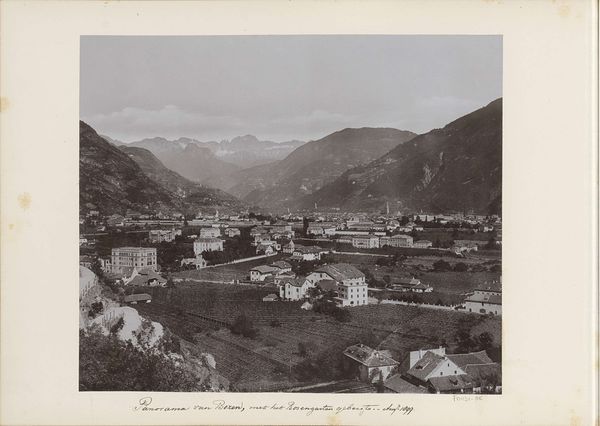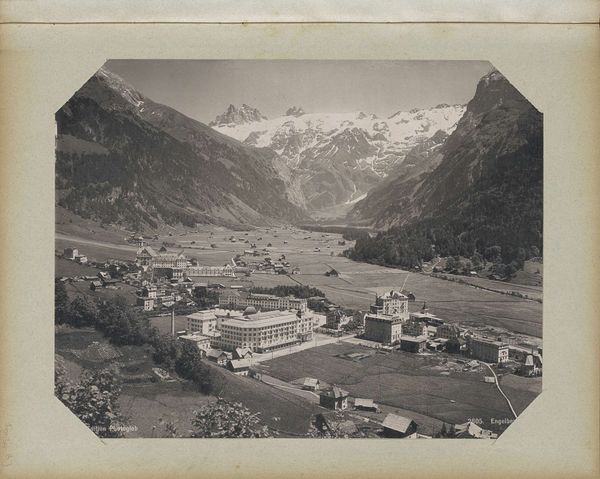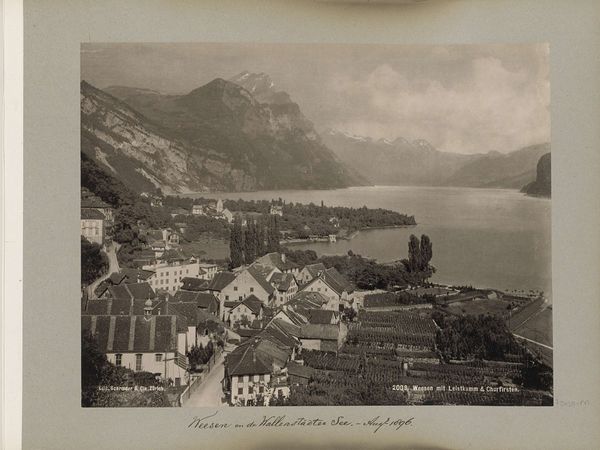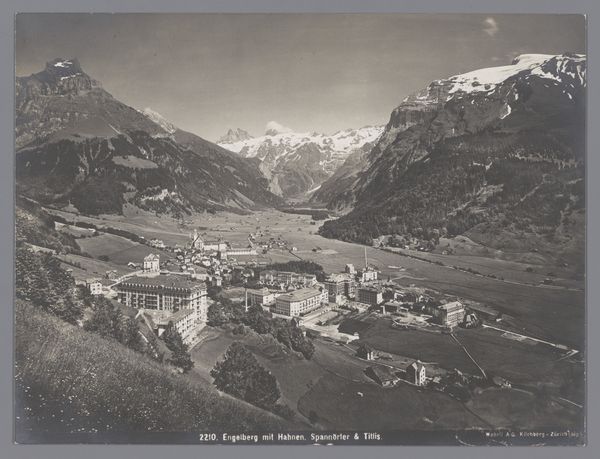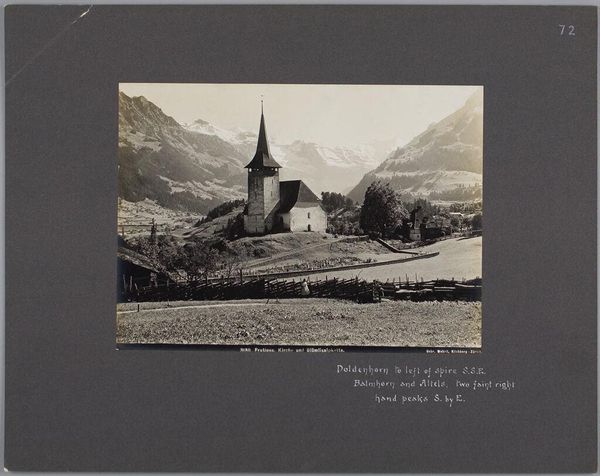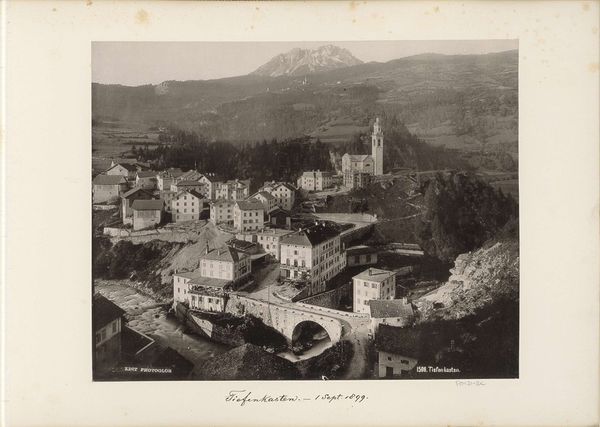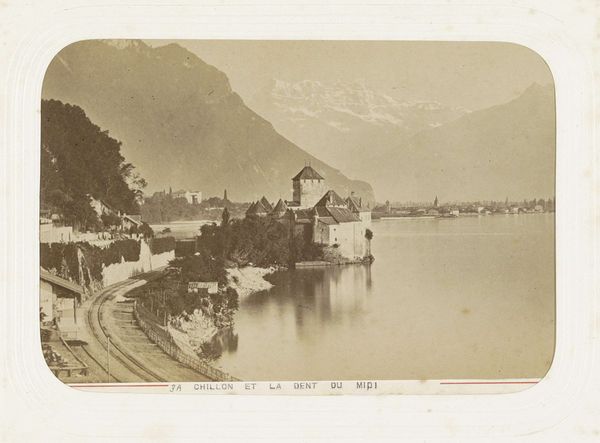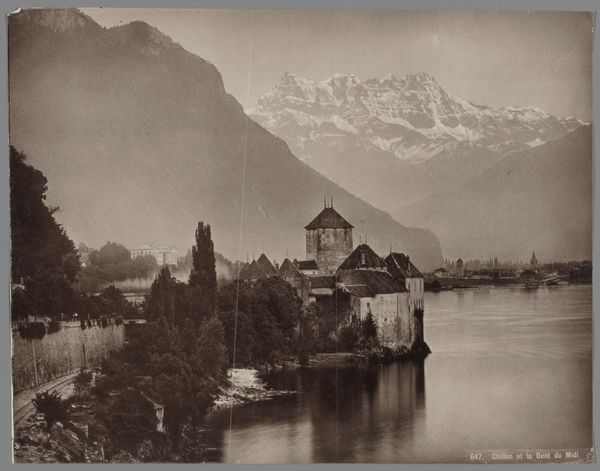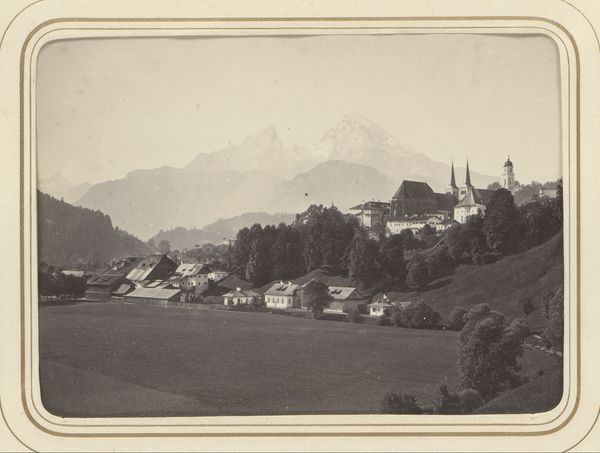
print, photography, gelatin-silver-print, albumen-print
#
pictorialism
# print
#
landscape
#
photography
#
gelatin-silver-print
#
19th century
#
watercolor
#
albumen-print
Dimensions: height 209 mm, width 267 mm
Copyright: Rijks Museum: Open Domain
Curator: This photogravure, whose creation is credited to Photoglob & Co. before 1899, is entitled "Gezicht op de burcht Sprechenstein bij Sterzing," offering a picturesque view of Sprechenstein Castle near Sterzing. Editor: My first thought is of old storybooks. There’s something dreamlike about the soft focus, like looking at a distant memory. It feels staged, almost, and that evokes a specific historical fiction. Curator: Well, consider the historical context. The late 19th century saw the rise of pictorialism, a movement that sought to elevate photography to the status of fine art. The focus here wasn't merely documentation but an artistic interpretation of the landscape. How do you think the socio-political climate played into these images? Editor: In the era of rapidly expanding empires and industrialization, landscapes like these represented a yearning for simpler times, untouched by the concerns of global power dynamics and mass migration. The soft focus and tonal manipulations, combined with idealized compositions, masked very real issues of land ownership, labor and social change, projecting fantasies onto existing locales. It's almost propagandistic. Curator: That’s a fascinating perspective. But perhaps we shouldn’t reduce it to mere propaganda. Images of grand castles resonated with notions of nationalism, yes, but I also wonder if it gave space to question notions of the time. Consider the technology available at the time, these landscapes allowed the public to visualize their nation on scales never seen before. Editor: That is a fair point, technology can shift our relationship with a state. I see this presented now and think of climate change; can romanticizing untouched land spur contemporary change? Curator: The image acts as an entry point. What looks like escapism might provoke new dialogue, right here, right now. Editor: Agreed. These historical landscapes, initially envisioned as idealized versions of reality, now have a dialogue with contemporary notions. Thanks for sharing your knowledge!
Comments
No comments
Be the first to comment and join the conversation on the ultimate creative platform.
